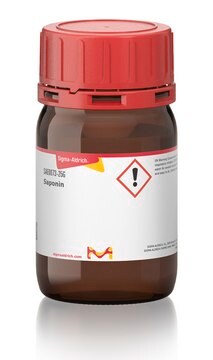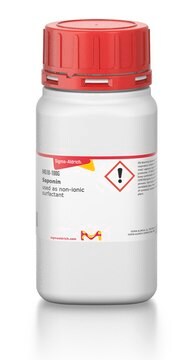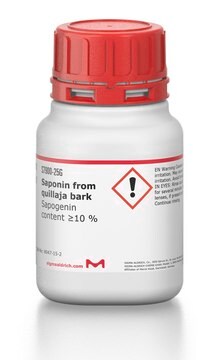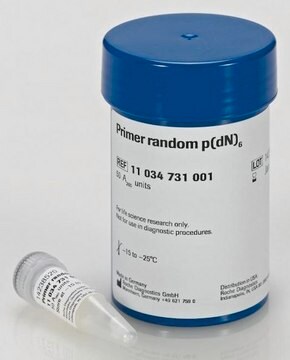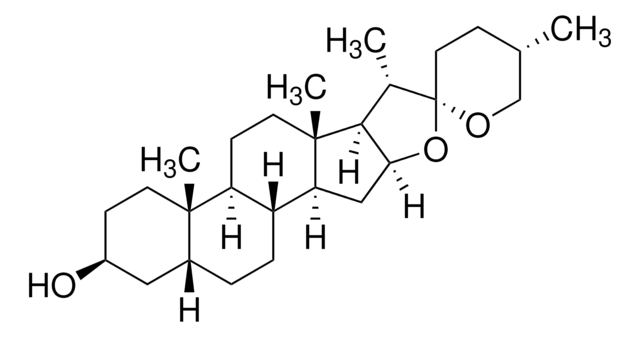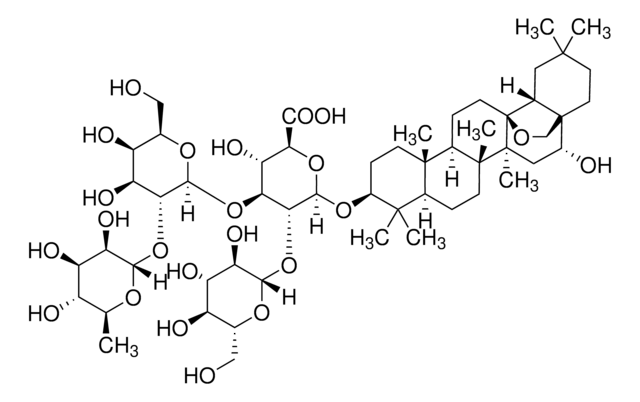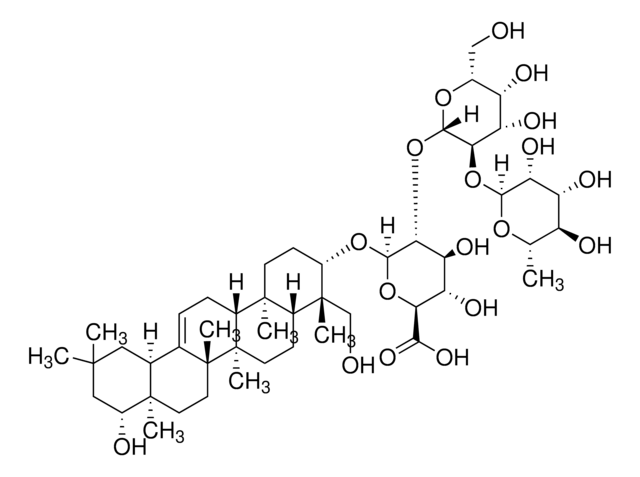S4521
Saponin from Quillaja sp.
Sapogenin content 20-35 %
Iniciar sesiónpara Ver la Fijación de precios por contrato y de la organización
About This Item
Productos recomendados
description
non-ionic
Quality Level
composition
Sapogenin content, 20-35%
technique(s)
HPLC: suitable
protein quantification: suitable
sulfated ash
≤10%
General description
Saponins are steroid or triterpenoid glycosides. They are biosurfactants that have several uses in the food and cosmetic industry.
Application
Saponin from Quillaja bark has been used:
- to stain fertilized oocytes
- in the analysis of intracellular cytokine production
- to permeabilize dendritic cells
Biochem/physiol Actions
Saponins solubilize the low density lipoprotein (LDL) fraction of cholesterol in micelles, thus lowering their concentration. Saponin from Quillaja bark is used as a flavoring agent in food and beverages. This saponin has been shown to enhance immune-cell proliferation in vitro.
Potent hemolytic when injected i.v.; surfactant that enhances penetration of proteins and other macromolecules through cell membranes; it also has been used as an adjuvant for vaccines.
Preparation Note
Purified to remove low molecular weight contaminants
signalword
Warning
hcodes
Hazard Classifications
Eye Irrit. 2 - STOT SE 3
target_organs
Respiratory system
Storage Class
11 - Combustible Solids
wgk_germany
WGK 2
flash_point_f
Not applicable
flash_point_c
Not applicable
ppe
dust mask type N95 (US), Eyeshields, Gloves
Elija entre una de las versiones más recientes:
¿Ya tiene este producto?
Encuentre la documentación para los productos que ha comprado recientemente en la Biblioteca de documentos.
Los clientes también vieron
Subset-dependent modulation of dendritic cell activity by circovirus type 2.
Vincent IE
Immunology, 115(3), 388-398 (2005)
Isolation of myeloid and plasmacytoid dendritic cells from human bronchoalveolar lavage fluid.
Tsoumakidou M
Immunology and Cell Biology, 84(3), 267-273 (2006)
Dynamic chromatin modifications characterise the first cell cycle in mouse embryos.
Santos F
Developmental Biology, 280(1), 225-236 (2005)
Yvonne Lange et al.
Biochemistry, 48(36), 8505-8515 (2009-08-07)
A few membrane-intercalating amphipaths have been observed to stimulate the interaction of cholesterol with cholesterol oxidase, saponin and cyclodextrin, presumably by displacing cholesterol laterally from its phospholipid complexes. We now report that this effect, referred to as cholesterol activation, occurs
Adjuvant effects of saponins on animal immune responses.
Rajput ZI
Journal of Zhejiang University. Science. B, 8(3), 153-161 (2007)
Nuestro equipo de científicos tiene experiencia en todas las áreas de investigación: Ciencias de la vida, Ciencia de los materiales, Síntesis química, Cromatografía, Analítica y muchas otras.
Póngase en contacto con el Servicio técnico
